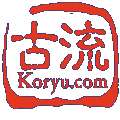Soke:
Endnotes
by William M. Bodiford
Random examples of organizations with websites on the Internet (as of March 2002) that promote use of the word soke as a exalted martial art title include the following: (1) the World Head of Family Sokeship Council (http://www.bushido.org/~whfsc/whfsc.html), which boasts "the most elite and prestigious grandmasters council in the world"; (2) the World Sokeship Council (renamed to World Headfounders/Headfamilies Council in 1989; http://www.geocities.com/Tokyo/6471/), which states that it "was established to create a trully [sic] 'elite' and very prestigious fellowship or peer group for that very small group of martial artists who have achieved the right to be called a 'grandmaster' by their peers"; (3) Juko-Kai International (http://www.jukokai.com), which under a link titled "Soke's Corner" describes its own "Zen Kokusai Soke Budo/Bugei Renmei" (a.k.a., Zen Kokusai Soke Remmei [sic]) as the West's first recognized sokeship commission (founded 1970) and identifies soke as someone who founds his own martial art "ryu." I thank Jim Kass for informing me of these websites. [back]
I could not find the word soke in Kim's popular dictionary, in Draeger's pioneering three-volume opus, nor in Hurst's scholarly history. In Frederic's dictionary it appears misspelled as sokei and is not defined but is mistakenly cross-referenced with shodai, which in turn is glossed as a title for the founder of a martial art "ryu" (i.e., ryuha or lineage). [back]
In addition to its historical meanings, this word acquires additional implications when used by modern writers or cultural critics as an analytical concept to explain certain features of the social and historical contexts in which soke appears. (For an explanation of the difference between terms and concepts, see Hall 1983.) [back]
For a brief English-language summary of his research, see the translator's introduction, pages 4-5, to Nishiyama 1997. [back]
Nishiyama (1982b, 14, 19-20) cites Shoryu Iemoto Kagami (Directory of Iemoto Schools), a woodblock text printed sometime in the early nineteenth century, to provide some indication of the number and kinds of artistic schools (ryuha; i.e., commercial guilds) then existing in Japan. According to this text the ratios between arts and number of schools was as follows: abacus = 7 schools; flower arranging = 2 schools; tea ceremony = 1 school (the Senke) with 14 sub-divisions; incense = 2 schools; Noh = 6 schools; poetics (waka) = 2 schools; linked verse (renga) = 3 schools; minimal verse (haikai) = 6 schools; checkers (go) = 4 schools; chess (shogi) = 4 schools; wind pipes (sho) = 4 schools; horizontal flute (fue) = 3 schools; lute (biwa) = 4 schools; zither (koto) = 1 school; and so forth. [back]
Nishiyama (1982b, 279) cites the research of Imamura Yoshio (subsequently published in 1967), which shows that during the nineteenth century more than seventy-one percent of the martial art schools listed in domain records were taught only in one location. [back]
During the Tokugawa period instructors of all types, whether affiliated with an iemoto system (i.e., commercial guild), a martial lineage, or a religious institution, charged monetary fees for diplomas. To protect their interests, they severely restricted the rights of students to reveal what they had learned to outsiders without proper authorization. In martial lineages, new students customarily signed oaths of secrecy and advanced students pledged that upon their own deaths all scrolls, texts, and diplomas they had received would be returned to their instructor's household. There is no evidence, though, that these kinds of restrictions were observed by military students prior to the Tokugawa period. [back]
Friday (18) and Hurst (178-179) also point out how government policies prevented martial art lineages from developing into iemoto systems. [back]
Nishiyama (1982c, 291-292) also discusses the Kodokan as a social institution that rationalized and modernized many features of the premodern iemoto system. [back]
The traditional soke schools of tea ceremony and flower arranging constitute the main exceptions to this trend. They have flourished by redefining themselves as institutions for promoting an appreciation for traditional Japanese culture and, especially, for teaching traditional values and etiquette to young women.[back]
Friday (32, 49-50) also uses the label soke as a designation for the Kunii family, but based on his analysis of soke as lineages characterized by "proprietorship over a package of teachings vested exclusively in the hands of one individual per generation." Friday's usage emphasizes the conceptual similarity among all kinds of instructional lineages before, during, and after the Tokugawa period. In his view, the development of iemoto systems (i.e., networks of branch instructors) by lineages that taught peaceful arts merely constitutes an extreme commercialization across borders of the same rights of proprietorship exercised on a local level by martial lineages. [back]
Main article
References

Contact Koryu.com
Last modified on December 27, 2017
URL: https://koryu.com /library/bodifordnotes.html
Copyright ©2022 Koryu Books. All rights reserved.
